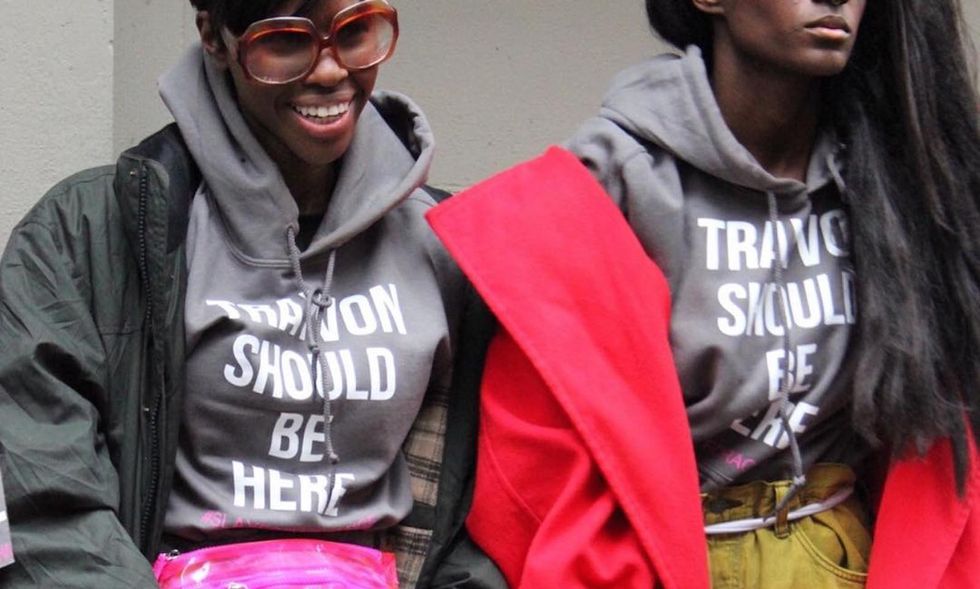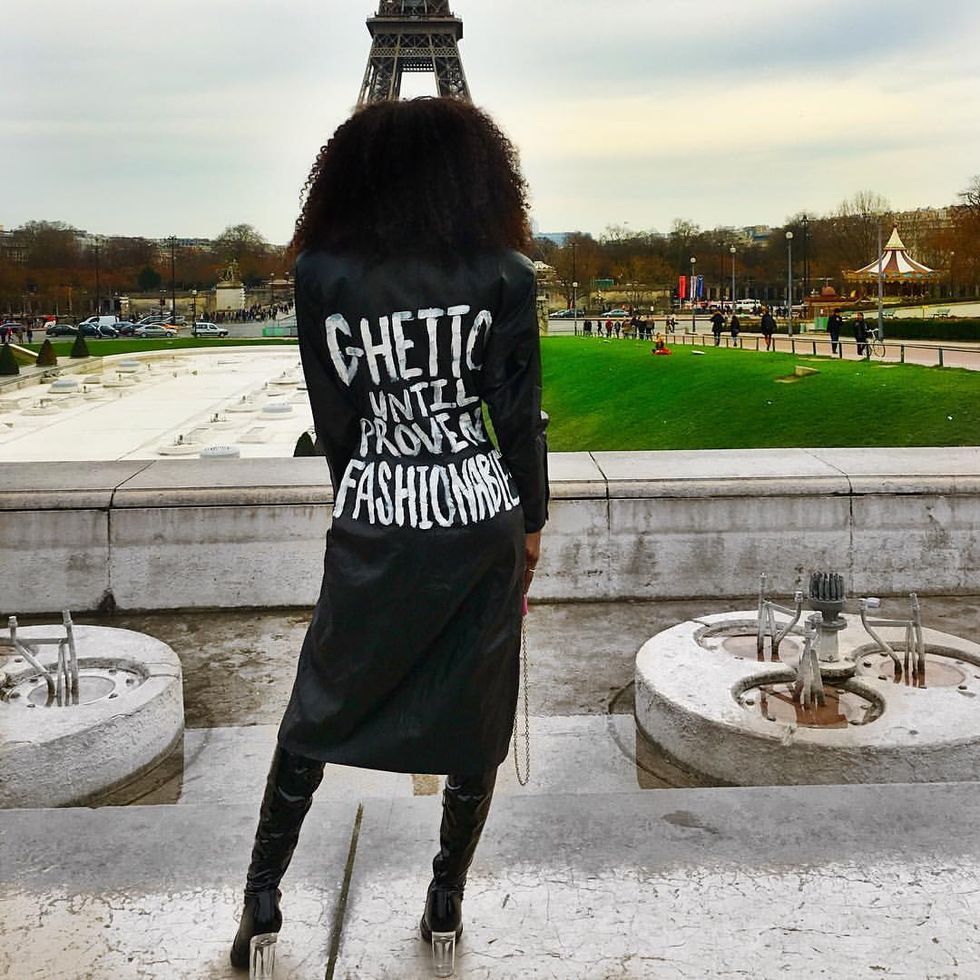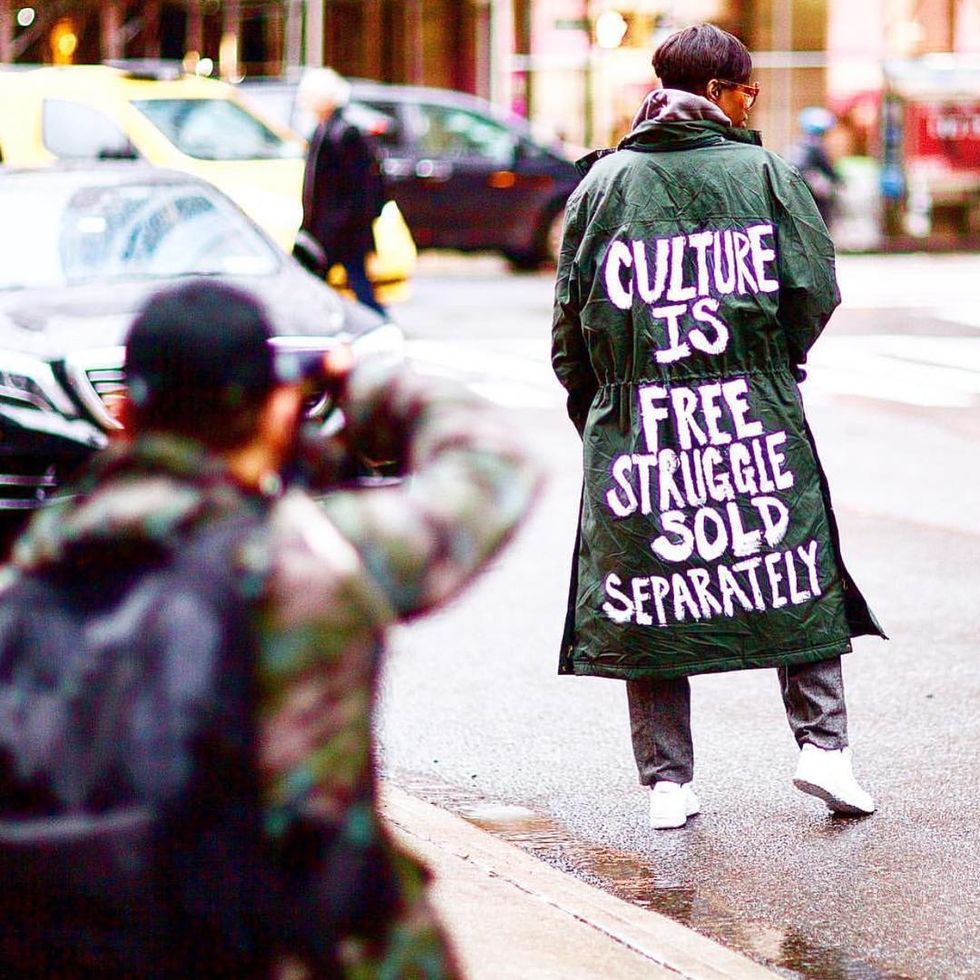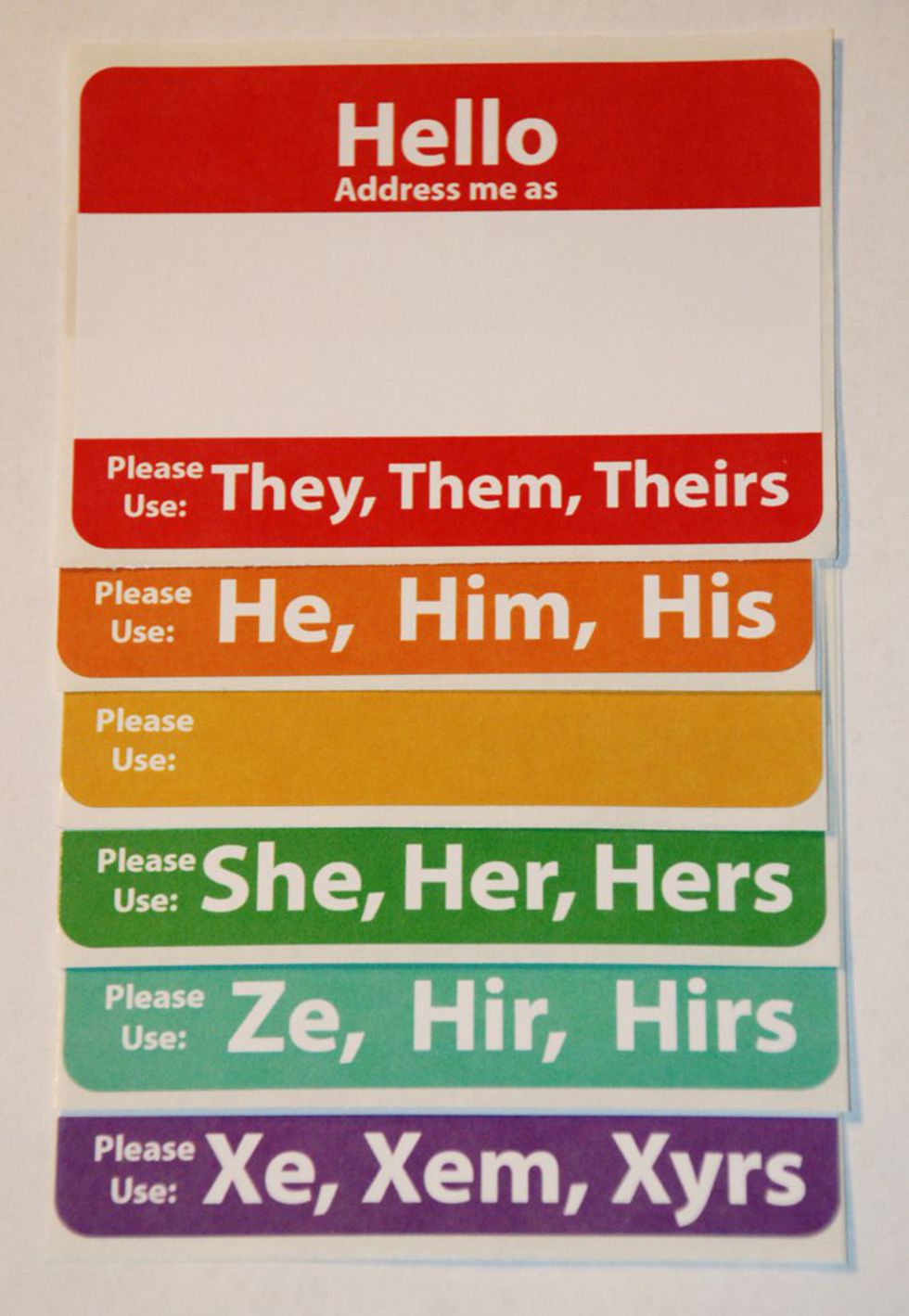I was scrolling Instagram when my eyes were graced by the beauty below that reads:
“Ghetto Until Proven Fashionable”
That clothing item was worn during this year’s New York Fashion Week, made to make a splash on black social/societal issues. It’s a Slay for a Change via Random and Chic example of activism through fashion. The political message on the clothing is representative of what passionate stylist, filmmaker and activist Shayla Hill feels about the undiversified high-fashion realm. I love the fact that her work, whether in fashion or in other projects, undergoes a tremendous outreach. There are many people that don’t listen...So, let’s encourage them to look -- and eventually understand why this message is so important. Her empowering brand is like her canvas.
Appropriators...Get into this, please.
Hill is serving us honesty. It’s as if some things aren’t acceptable or aren’t as garish or negative until someone else has taken reign over it. Let’s ask: What looks or styles do we see today that are directly connected to a negative connotation of “ghetto?" When styles of black culture are taken out of context and regurgitated in the non-minority realm, I ask: Why is this suddenly “fashionable” and no longer “ghetto?" Why do certain styles become “artistic and innovative” once it gets presented to the public by non-black people?
“One of the biggest difficulties as a black woman is seeing our culture and creations continually appropriated and called something else in mainstream media. Black women are naturally trendsetters and we move to the beat of our own drums. But when we were rocking cornrows; long, bright acrylic nails; embracing our curves, and using certain vernacular, we were/are deemed “ghetto,” “unrefined,” “unintelligent,” “unprofessional.” Hence, the phrase I created while in Paris Fashion Week: “Ghetto until proven fashionable.”” - Shayla Hill (from “This stylist believes the Kardashians built an empire on the 'style of black women'” via Yahoo Lifestyle)
So many people find a way to contort the meaning of the word “ghetto” or certain types of fashion or names and, then, attach that contorted view to black people. Those times when you’ve found out the origins of a particular style and realize it’s been regurgitated as some “shiny, new” version, know that the previous “ghetto” label has been wrongly attached. Does the person that talks about that “ghetto” person, place, or thing even know what they’re saying?
Another one of her truthful pieces has “Culture is free. Struggle sold separately.”
Then, you come to the conclusion that this movement doesn’t even have to be about fashion, but about bringing awareness to ongoing cultural misrepresentation in the world. I appreciate Shayla Hill’s contribution to that.

























